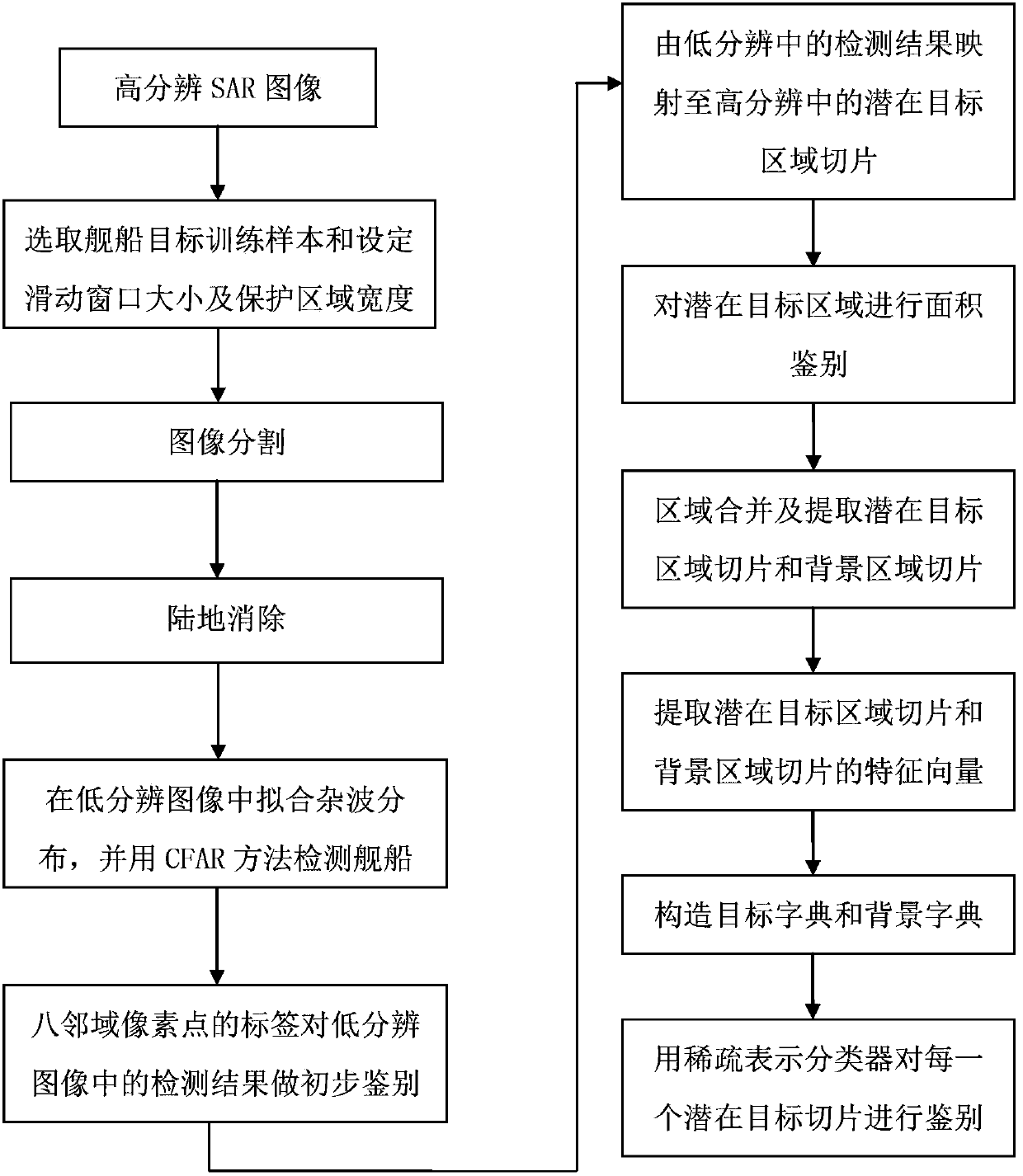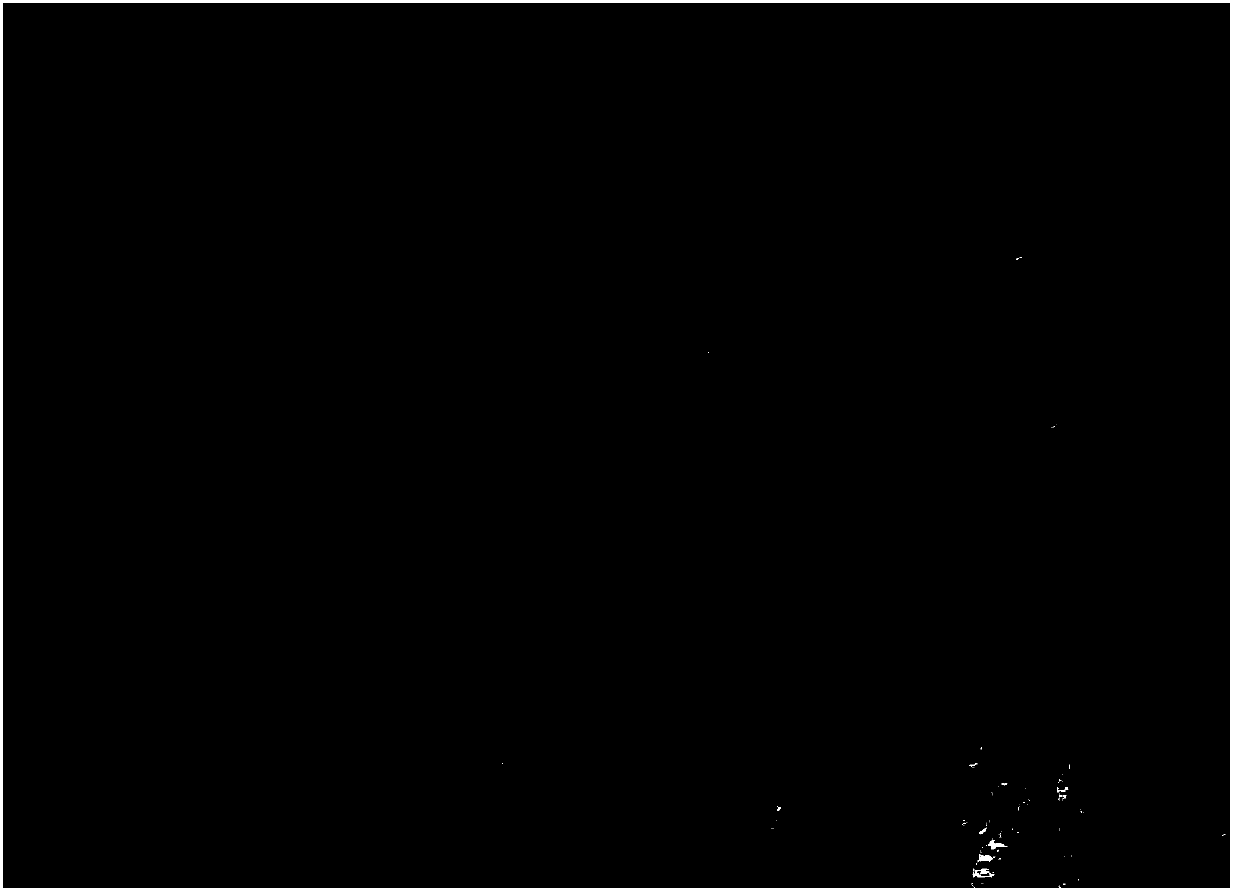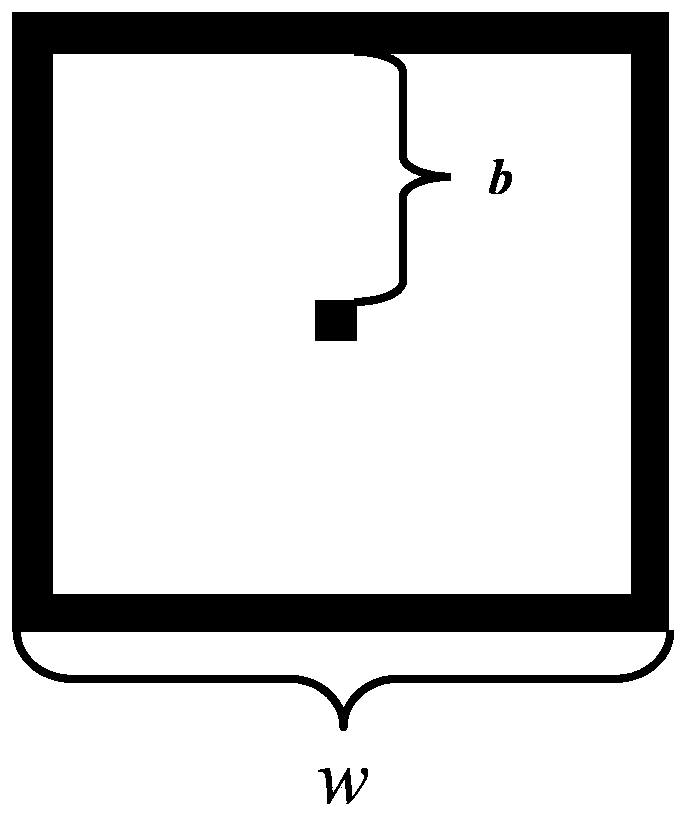CFAR (Constant False Alarm Rate) and sparse representation-based high-resolution SAR (Synthetic Aperture Radar) image ship detection method
A technology for ship detection and sparse representation, applied in the field of remote sensing image processing, can solve the problems of reduced identification performance, poor detection result performance, and low algorithm adaptability, so as to improve detection performance, overcome the impact of detection performance, and reduce data amount of effect
- Summary
- Abstract
- Description
- Claims
- Application Information
AI Technical Summary
Problems solved by technology
Method used
Image
Examples
Embodiment Construction
[0029] refer to figure 1 , the specific implementation steps of the present invention are as follows:
[0030] Step 1: Select the ship target training sample and set the size of the sliding window and the width of the protection area.
[0031] 1.1) For a high-resolution SAR image I used for ship detection, use a rectangular frame to manually select a ship target I in the high-resolution SAR image I t , the area contained in the rectangular box is the ship target training sample I t , the selection principle of the rectangular frame is as small as possible and ensure that the selected ship does not exceed the rectangular frame, and the larger side length of the rectangular frame is r;
[0032] 1.2) The high-resolution SAR image I is down-sampled into a low-resolution image I′ by rows and columns with a step size s, where s∈{2,4,6}, the size of s is determined according to the resolution of I, and the resolution The higher the value, the larger the step size s, otherwise the sm...
PUM
 Login to View More
Login to View More Abstract
Description
Claims
Application Information
 Login to View More
Login to View More - R&D
- Intellectual Property
- Life Sciences
- Materials
- Tech Scout
- Unparalleled Data Quality
- Higher Quality Content
- 60% Fewer Hallucinations
Browse by: Latest US Patents, China's latest patents, Technical Efficacy Thesaurus, Application Domain, Technology Topic, Popular Technical Reports.
© 2025 PatSnap. All rights reserved.Legal|Privacy policy|Modern Slavery Act Transparency Statement|Sitemap|About US| Contact US: help@patsnap.com



